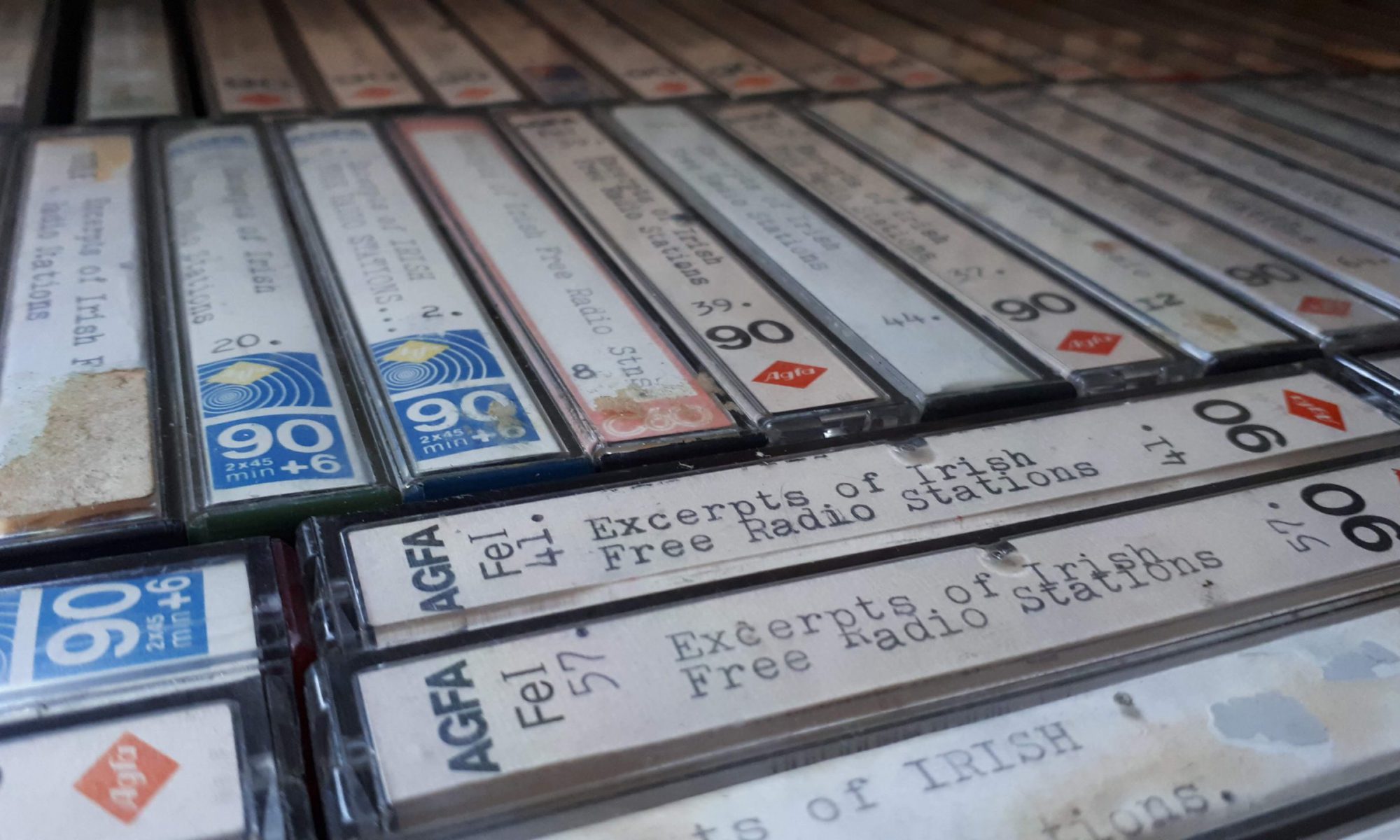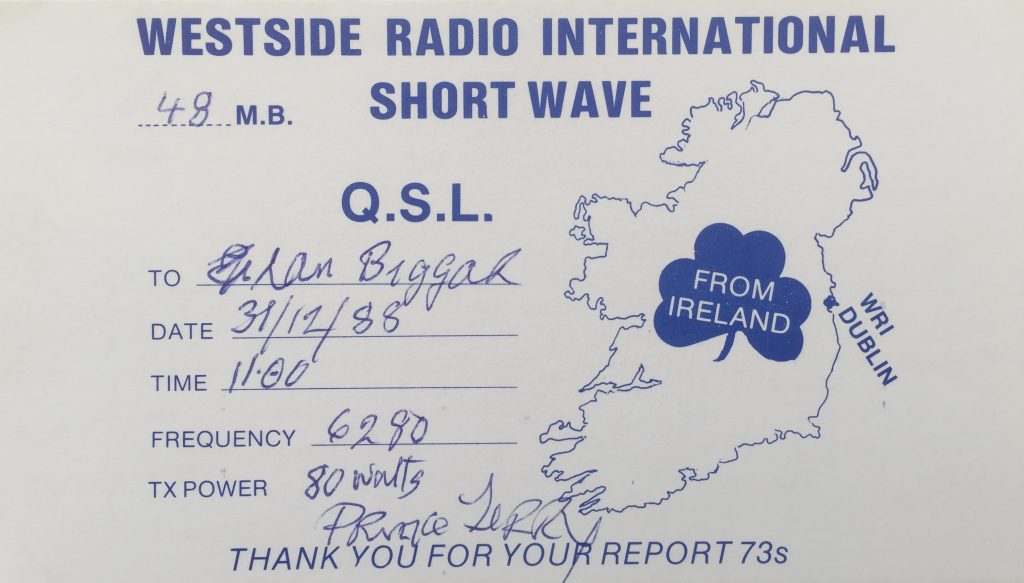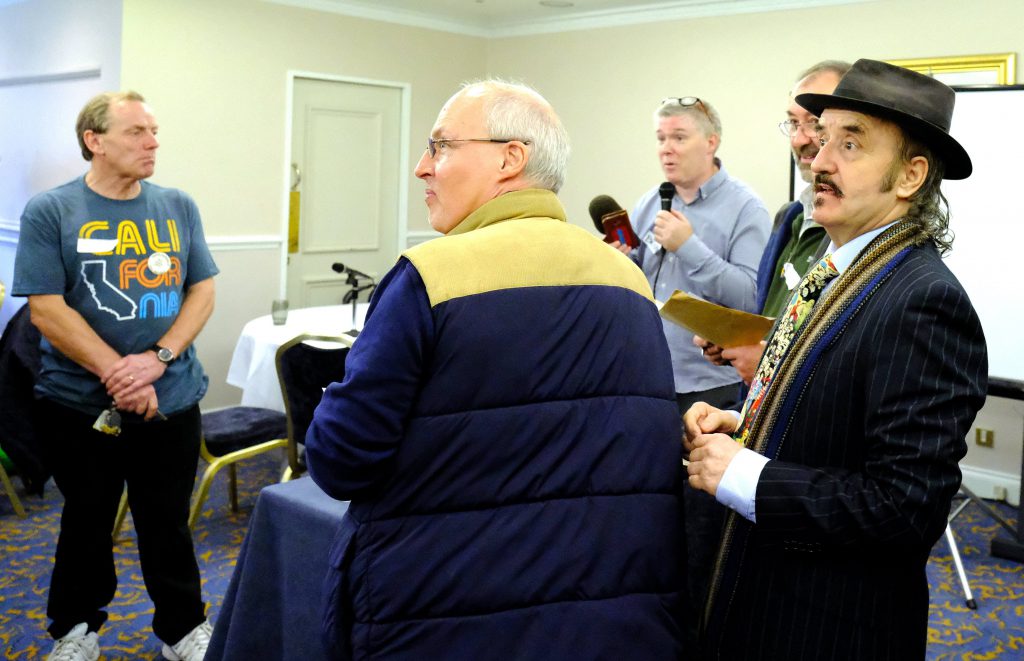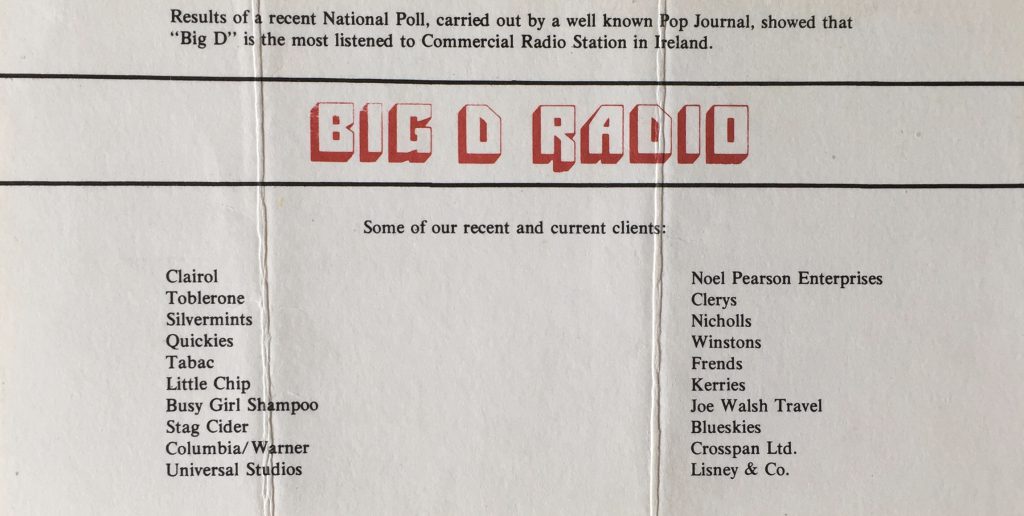Podcast: Play in new window | Download
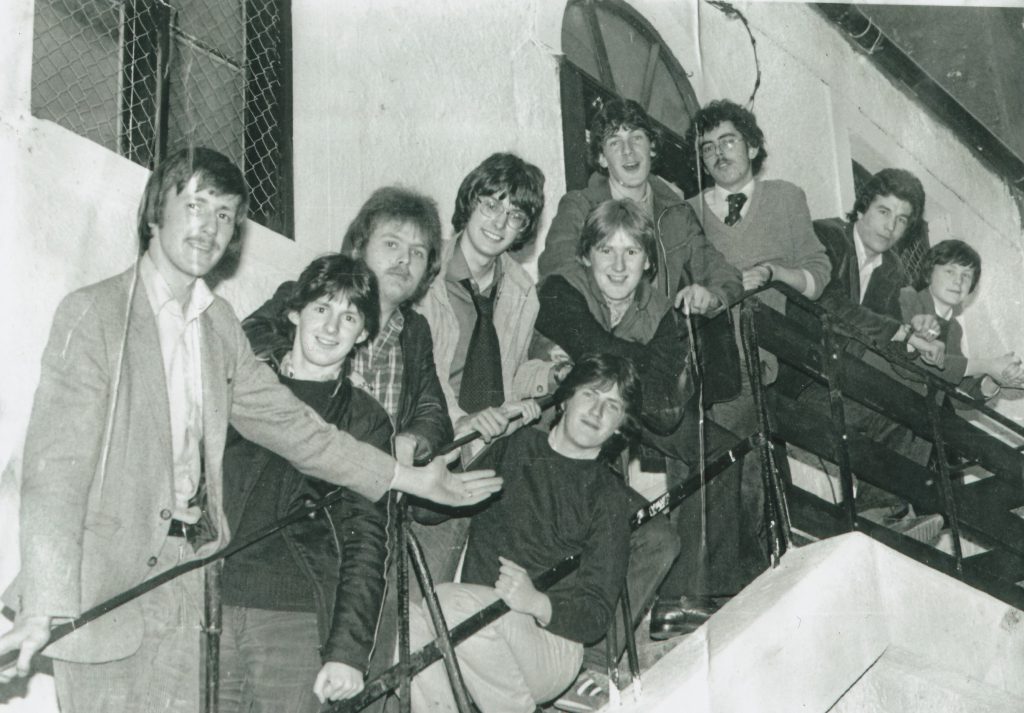
We’re delighted to return to our Early Cork Series with a number of recordings of Cork City Local Radio (CCLR). CCLR was launched as Cork City Radio in February 1978 in competition with the Cork Broadcasting Company (CBC), which had begun broadcasting in January of that year. According to The Jolly Roger: Pirate Radio Days in Cork, CCLR was set up by Dubliner Shay Curran, who moved to Cork to set up a record store on Patrick Street. Pirate radio was a natural progression, and Curran remembered climbing across roofs near Paul Street of Half Moon Street to set up an antenna and being questioned by a Garda. The station was initially called Radio Shandon, a reference to another city centre district, because its signal was not travelling far.
‘There was a great buzz about it but, for me at least, a certain amount of paranoia because of the threat of Department of Posts and Telegraphs and Garda raids. There was a certain amount of fear involved’, Curran said. Initially CCLR was announcing 199 metres although its exact frequency is not known. From 1979 it announced 261 metres and frequencies around 1143 kHz were noted. The station was logged by DXers on more than one occasion in 1980 operating around 1119 kHz.
One of those involved with CCLR in the early days was John Creedon, now a well-known broadcaster on RTÉ. Using the on-air name of Jill St Clair, Patricia Deeney was one of the few women to be heard on pirate radio in Cork at the time. Another DJ, Philip Johnston (Philip Knight), remembered getting involved when a sales rep from CCLR came into the clothes shop where he worked. Neil Prendeville (Jim Lockhart) recalled doing outside broadcasts from gigs in 1979-80. Other CCLR presenters who would go on to have careers in the media were Paul Byrne, PJ Coogan, Ken Tobin, Trevor Welch, Rob Allen, Ken O’Sullivan and Colin Edwards.
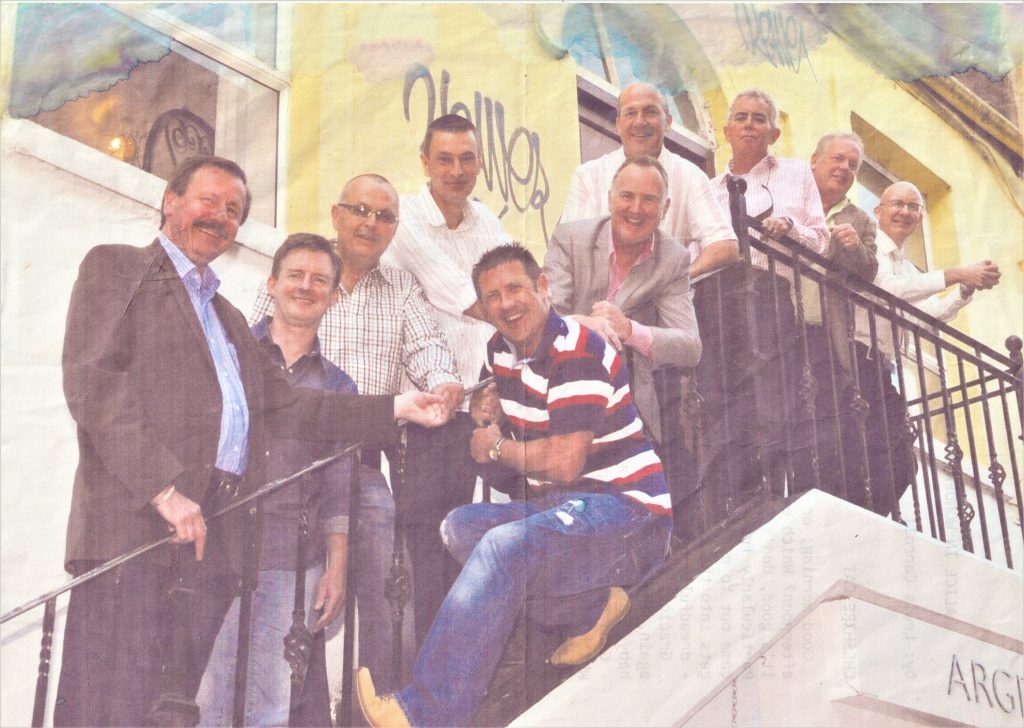
Based originally on Sheares Street, CCLR later moved to French Church Street within a short distance of CBC. In September 1982 the station introduced FM transmissions on 95.6 MHz for the first time in its existence. At this time, CCLR was still being run by two full-time people without any major backing.
Ian Biggar remembers: ‘Whilst working at ERI we heard that there had been a cash injection to CCLR. This was around Christmas 1982. Sure enough, new jingles by CPMG were introduced as well as a new transmitter. The transmitter site was around Glanmire where, strangely enough, the ERI DJ house was. The signal strength was massive in that area, but modulation was low. If I remember correctly, the medium wave transmitter had always been at the studio site in the city centre and the power was low, probably around 100 watts. I seem to remember being told the new transmitter was running around 500 watts.
The station revamped its programming during 1983 and introduced new station management. CCLR now included a lot more community items in its programming, rather than being just another jukebox. CCLR closed on 4th November 1983 and in the December issue of Offshore Echos, it was reported that it was off the air due to problems with the medium wave transmitter. They had done some tests on FM, but the feeling was that the station was set to close. And so, with ERI and South Coast cleaning up in the city and beyond and using much higher powered transmitters, CCLR was destined to join the likes of Capital Radio and Radio City, both of which closed during 1982.
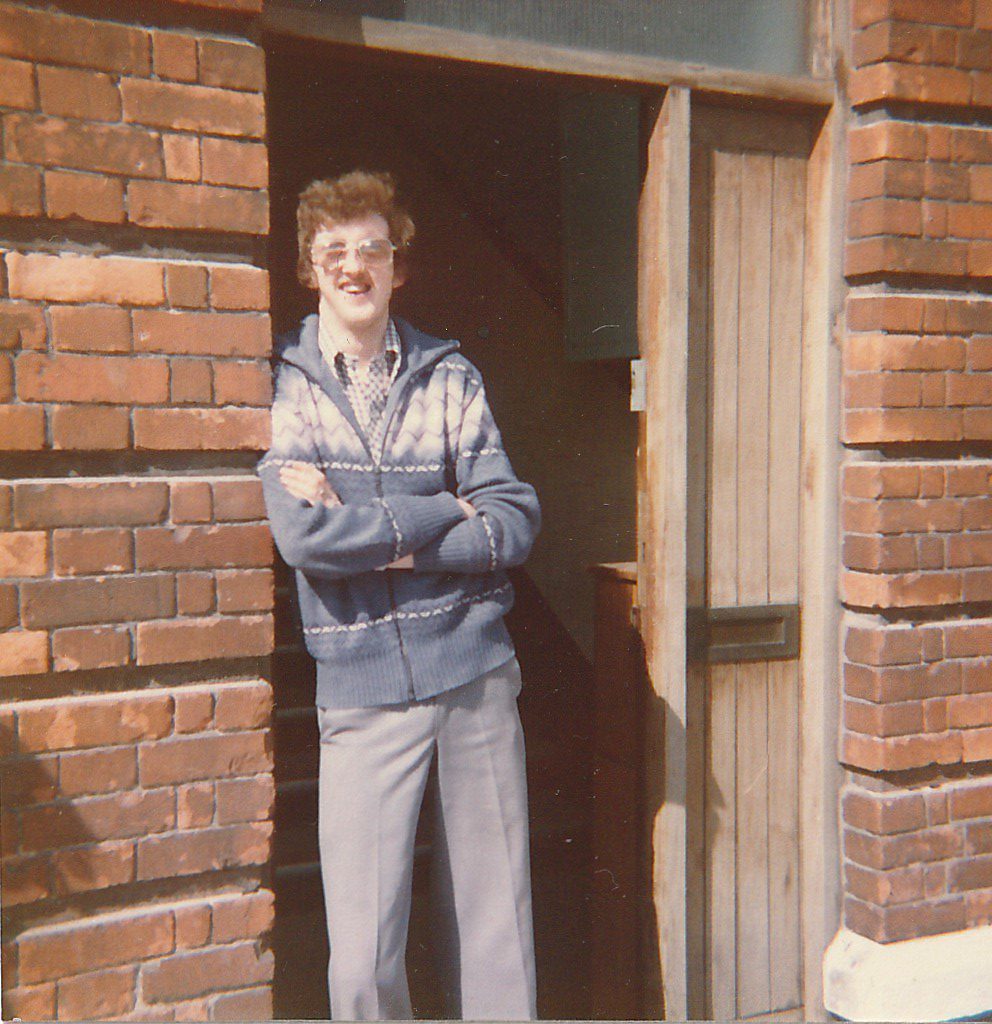
This recording was made in January or February 1980 and features Karl Johnson (Dan Noonan) with the Sunday ‘Afternoon Delights’ show from 1615 until about 1700 but airchecked. Audio quality is poor and there is some background noise as this was recorded by placing a tape recorder up to a radio. Thanks to Lillian O’Donoghue for the donation. CCLR was featured in Leon Tipler’s documentary about the Irish pirates.
